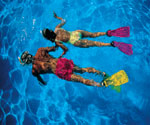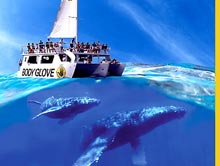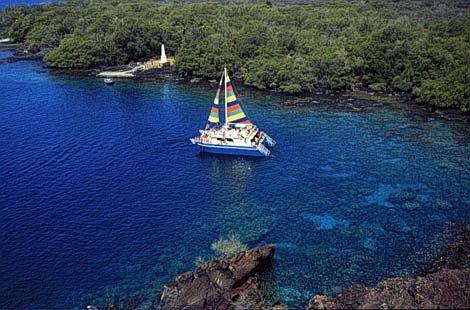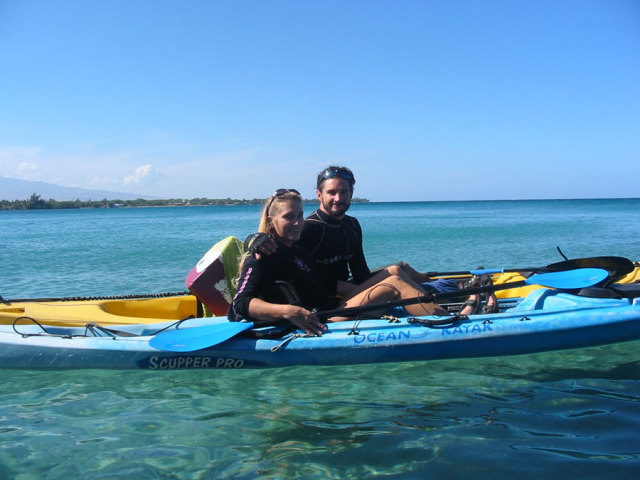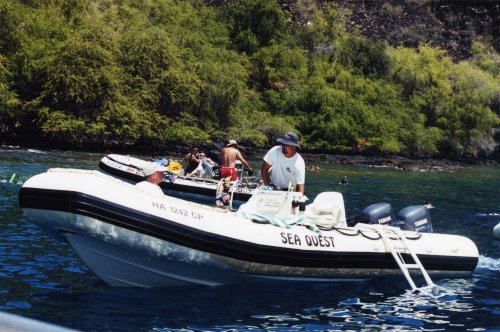 |
|
 |
General Tips
When carrying your kayak, attempt to do so with two persons, one at each end of the kayak. Use common sense - do not lift with your back. Carry the kayak empty, then at the desired launch point load your gear on board. When carrying your kayak on your car’s roof rack, make sure you remove the kayak seats and secure all loose straps so that they do not flop around and cause abrasion damage to your car. If you use your kayak in salt water, make sure you rinse off the roof of your car at the end of the day.
Some items you may want to bring when kayaking include: compass, charts, towrope, flashlight, water bottles, sunscreen, and snacks. These items should be secured, but accessible if you plan to use them en route.
When loading gear onto the kayak, make sure it is secured. Latch down or tie down all of your gear, just in case that rogue wave catches you by surprise and tips your kayak over! Try to distribute your weight evenly throughout the kayak. Use dry bags, if available, to store your valuables and items that cannot get wet. Plan on everything else on the kayak getting wet. While paddling, your upper body, face, neck, and back will be exposed to the sun, so apply liberal amounts of waterproof sunscreen often and if possible wear a hat, and a shirt or rash guard. Don a lifejacket, especially if the water conditions are rough.
Ocean kayaks are very easy to use and very forgiving. Sit comfortably. Sit straight - your backside should be all the way back in your seat and your knees bent. Adjust your backrest to provide maximum lower back support. Keeping your knees slightly bent will keep the pressure off of your lower back. Don’t bend them too far or you may end up smacking your knees with your paddle. Relax your hands when you paddle - do not white-knuckle grip the paddle! While paddling, let your torso and shoulders pivot and rotate in a natural motion as your arms paddle from one side to the next. Move at your own pace, resting as necessary.
Make sure you check the weather and water conditions prior to kayaking. Pay particular attention to the winds and water currents. It is always better to paddle against the wind when going out, and then with the wind at your back when returning - if possible.
Kayak Snorkeling and Diving
If you plan to snorkel or SCUBA dive from your kayak, there are several things to consider. When packing your kayak, make sure your gear will be accessible when you reach your dive site. After you don your snorkel gear, gently slip over the side of the kayak and ease into the water. If you snorkel in deep water and cannot beach your kayak on shore, simply hold onto the towline with one hand as you snorkel around and you will find it quite effortless. If you are SCUBA diving off of the kayak and are doing a deep water entry, you will need to inflate your BCD and float it in the water next to the kayak as you ease into the water to don your gear while floating. If you are using a weight belt, take caution not to drop it off the kayak into the water.
How to Tandem Kayak
For tandem (two-seater) kayaks, the best way to paddle is to keep a constant rhythm and both the front and rear kayakers move in unison (i.e. both paddling left, then both paddling right). The font kayaker should set the pace - paddling at a constant speed. The rear kayaker will match the front kayaker’s pace. The rear kayaker is responsible for steering the kayak. This is done by shallowing or deepening his paddling to force the nose of the kayak to track in the desired direction. Keep a steady, consistent pace, and rest when your are tired.
Kayaking is fun, especially in a place as scenic as Hawaii. Looking for a guided tour? Check out our partner site with guided snorkel and kayak tours of the Big Island.
Travel Planning Articles
Planning your Trip When to come, how long to stay, itineraries, good guide books.
Big Island Transportation How to travel to the attractions, how to get there, plan your driving
Vacations for Families Best family beaches, activities for youngsters, infants, teens
Packing for your Trip The Big Island scenery is as diverse as its weather - pack smart
Gear Guide Make sure you are outfitted with the right gear
Travel Planning Resources
Big Island Beach Guide We cover all the beaches of the island, ratings, photos, panoramas
Big Island Snorkeling Guide Find out where are the best popular and remote snorkel spots .The best snorkeling on the Kona and Hilo side of the island
Big Island SCUBA Diving Guide Find out the best shore diving sites - you don’t need a boat to go
The best shore diving on the Kona and Hilo side of the island
Big Island Kayak Guide How-to kayak guide, the best kayak spots, sea caves, snorkeling
Ocean Adventures
Sea Caves Snorkel and Kayak Adventure
 Kayak along beautiful sea cliffs, over underwater lava tubes, into mysterious sea caves and go snorkeling in aqua waters filled with tropical reef fish! After traveling along sea cliffs adorned with interesting arches and blowholes, you’ll kayak into a sea cave with pink walls and electric blue waters. Explore a protected, clear, calm cove for snorkeling and swimming.
Kayak along beautiful sea cliffs, over underwater lava tubes, into mysterious sea caves and go snorkeling in aqua waters filled with tropical reef fish! After traveling along sea cliffs adorned with interesting arches and blowholes, you’ll kayak into a sea cave with pink walls and electric blue waters. Explore a protected, clear, calm cove for snorkeling and swimming.
Sea Quest Ocean Rafting Adventure
 Join Sea Quest for a rafting adventure along the Kona Coast! Explore lava tubes and sea caves, and enjoy snorkeling at the Place of Refuge and Captain Cooks Landing! After snorkeling, you’ll enjoy a breathtaking cruise along the Kona Coast taking in the spectacular coastline and exploring ancient lava tubes and sea caves.
Join Sea Quest for a rafting adventure along the Kona Coast! Explore lava tubes and sea caves, and enjoy snorkeling at the Place of Refuge and Captain Cooks Landing! After snorkeling, you’ll enjoy a breathtaking cruise along the Kona Coast taking in the spectacular coastline and exploring ancient lava tubes and sea caves.





